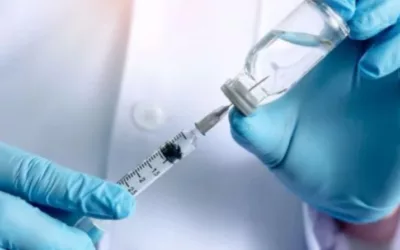Hopeful reopening announcements are trickling in as Wyoming begins to heal an economy bruised and battered by the COVID-19 pandemic.
In Teton County, restaurants, bars, coffee shops, movie theaters and other public spaces received the green light Thursday to reopen just days after salons, barbershops, gyms and childcare facilities unlocked their doors.
Teton District health officer Dr. Travis Riddell, who in the past has issued stricter health orders than statewide directives, will not be enacting a variance to Wyoming’s orders that allow businesses to reopen today.
The state orders, local health officials say, are appropriate for Teton County this time around. They ease restrictions on not only restaurants, bars and theaters but also on gatherings—people can now gather in groups of up to 25. Meanwhile, gyms can open locker rooms and revive their personal training and group classes. Childcare facilities can hold up to 25 people per room.
After Gov. Mark Gordon issued those orders on Wednesday, Riddell and Teton County Health Department staff studied them and found they mirrored the health department’s “Roadmap to Recovery,” said Jodie Pond, director of the Teton County Health Department.
That plan outlines specific measures for people and businesses to follow that will slow the spread of COVID-19. The county’s orange “stabilization” phase hews closely to the state’s newest directives, Pond said. For people, it advises continued precautions such as wearing masks, diligent handwashing and continued social distancing measures. For businesses, it offers myriad ways to adjust operations and curb disease transmission.
To open their doors, businesses must follow a lengthy list of requirements in effect through May. Restaurants, in particular, face multiple guidelines. For example, eateries must seat all patrons at tables or booths—forget sidling up to the bar or assembling around cocktail tables for now. A maximum of six people “preferably of the same household,” may sit together, the order reads (though it is hard to imagine restaurant staff policing patrons on this).
Tables must be six feet apart, but “preferably 10 feet” and signage about keeping six feet of distance from other patrons must be placed in establishments. Tables also cannot be set before customers arrive and employees must directly hand customers items such as cups, lids, napkins and straws.
Waitstaff must also make changes to their work routines. Servers must wear face masks and wash their hands in between interactions with different tables. Those handling food, and even scooping ice, must wear gloves. Employees also must be screened for COVID-19 symptoms before clocking in and their employers must retain logs of those screenings.
The health orders mandate strict cleaning measures and mitigation efforts too. Hand sanitizer must be stationed at entrances and near bathrooms. Businesses should encourage “contactless and non-signature payment,” the state directive reads. They must sanitize payment stations after each use and clean and sanitize customer tables, chairs, menus, etc. after each party leaves and staff must sanitize the entire facility three times per day.
All these changes have spurred some anxiety among business owners, Pond said.
Since last week when Gordon announced eased restrictions were on the horizon, the health department’s 23 full-time employees have fielded “hundreds of calls and emails” from curious and concerned business owners, Pond said. That’s in addition to the work they are doing to assist businesses through the Jackson Hole Chamber of Commerce.
“I think a lot of people are a little nervous to open up and so they just want to talk to somebody and make sure they’re doing it correctly,” Pond said.
Julia Synchuk, manager at Hatch Taqueria and Tequilas, said taking all the correct steps over the last two months has been consuming. Hatch stayed open offering carry-out orders during the peak of the pandemic “for survival.” Since then she and her staff have evolved with each health order.

In an email announcing their reopening, Hatch included a graphic that depicts some of the new measures staff is taking to slow the spread of COVID-19. (Courtesy Hatch)
First, they adjusted to regulations so the restaurant could stay open and offer curbside dining. Similar to other eateries that weathered the pandemic storm, they launched a special to-go menu. They added alcohol when Gordon issued an order allowing that. Their efforts yielded about half the business the restaurant normally sees in April.
“It’s been a hard two months because we tried to survive and stay open,” Synchuk said.
Recently, restaurant staff shifted to studying recommendations and health orders for a celebratory moment: reopening at 8 a.m. Saturday for breakfast. Synchuk says she and her staff were unphased by the list of modifications that will make reopening possible. “I don’t think it’s too much to ask considering everything that’s happening right now,” she said.
But Synchuk also says it’s too early to celebrate, and a lot depends on the coming months.
“I worry about July and August,” she said. “If we are busy, if we can recover from this in July, August and September, we will be all good. But if August is slow—that keeps me up at night. It’s hard to tell. I’ve been talking to a lot of people and no one knows what’s going to happen.”
Kevin Cohane, co-owner of Persephone Bakery and Picnic (and a KHOL board member), said “everything rides on the summer.”
Since the pandemic hit, he and his wife Ali Cohane shut down two of their three businesses, operating takeout service solely out of Persephone in Jackson. “We’ve taken a pretty steep dive at that location alone,” Cohane said.
Cohane tried to supplement that loss with online sales, “coming up with products we can ship to people—quarantine boxes, cookie decorating kits, things we wouldn’t normally sell in the shop but were able to ship all around the country,” he said. Online sales and a few robust days at Persephone, Mother’s Day, for example, helped.
But now Cohane’s gaze is anxiously fixated on summer as he prepares to reopen all three locations on Monday. “We make our entire year in those three months, so I think I can speak for at least all the restaurant owners I know that we’re all very nervous.”
If restaurants like Persephone and Picnic see their summer sales drop by 50 percent, it will make the off-season an incredibly difficult period to weather, Cohane said.
Persephone and Picnic stayed afloat during the shutdown thanks to a loan from the federal Paycheck Protection Program. It becomes a grant if small businesses keep the same staffing numbers they had prior to the pandemic by a June 30 deadline. That stipulation also makes Cohane nervous. He said with the reopening they have so far brought back roughly 75 percent of staff— “as many as possible.”
Cohane says he wants all his employees working, but job security is uncertain even for those who are returning. The question now, he said: “If I brought everybody back and burned through that entire loan and then on June 30, we realize business is about 50 percent of what it normally would be, I have to lay off a bunch of people again. Once the loan burns out, we can’t just keep paying people when business isn’t there. So that’s a point I don’t know that anyone understands when it comes to this loan.”
“We make our entire year in those three months, so I think I can speak for at least all the restaurant owners I know that we’re all very nervous.”
The reopening of businesses comes with a mixed set of emotions and confusion: it’s forcing people to weigh economic survival against health concerns about an illness epidemiologists are still struggling to understand. Business owners, some who might not survive another shutdown, are proceeding with caution, uncertainty and a little hope.
The announcement that Grand Teton and Yellowstone national parks will reopen on a limited basis May 18 deepens that cautious optimism. It could draw scores of visitors to Jackson for better or worse.
The governor, who is steering Wyoming’s recovery and supports the parks’ reopenings, acknowledged this during a press conference Wednesday. “I’m anxious today,” Gordon said. “I’m very anxious because we are loosening substantially many of the requirements we had in place. We’re doing that in a way that we believe is safe and yet I stand before you today knowing that our citizens are at greater risk today, because of what we’re talking about with Yellowstone Park, than they were. That’s not easy.”





